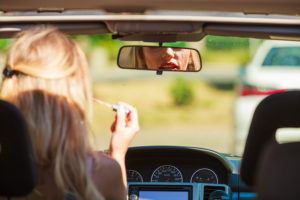Reckless driving poses a serious danger on the roads every day. Many drivers find themselves growing overly confident and taking chances that increase the risk of an accident. Others may give in to road rage, engaging in more dangerous overall behaviors that can create catastrophic accidents.
Each year, reckless driving claims hundreds of lives, despite many states cracking down on reckless driving and instituting stiff penalties for drivers who engage in unsafe behavior on the road.
In this blog, we discuss the hazards of reckless driving, what you can do to avoid them, and how a car accident lawyer in Bronx can help if a driver’s recklessness harms you or a loved one.
What is Reckless Driving?
Reckless driving includes any behavior that puts others at risk on the road. The National Highway Traffic Safety Administration (NHTSA) notes six risky driving behaviors that can increase the risk of accidents and serious injury. These behaviors include driving while distracted, intoxicated, drug-impaired, drowsy, speeding, and lack of seatbelt use. Other reckless driving behaviors may result from road rage or aggressive driving tendencies.
Drunk Driving
Each year, drunk driving causes more than 28 percent of traffic-related deaths across the United States. Thousands more people suffer severe injuries, including life-altering limitations, due to the devastating behaviors of drunk drivers on the road.
Drivers with a BAC of 0.08 percent or higher may engage in riskier and less controlled behaviors than other drivers.
Driving while intoxicated can lead to:
- Poor overall vision. Drunk drivers may suffer from fuzzy or tunnel vision, preventing them from observing all their surroundings on the road. As a result, they may not notice an accident risk right in front of them.
- Poor motor control. Drunk drivers may have difficulty controlling their vehicles, leading to drifting from their assigned lanes.
- Compromised decision-making skills. Often, drunk drivers make poor or reckless decisions on the road, which may result in a devastating collision.
- Slowed reflexes. In many cases, drunk drivers do not have the reflexes to slow or stop their vehicle in time to avoid a collision, which may result in devastating accidents.
Drunk drivers may also engage in unpredictable behavior while behind the wheel. As a result, other drivers may have a harder time determining what the drunk driver might do, making it difficult for them to avoid a collision.
Aggressive Driving
Aggressive driving behaviors may include anything from speeding to swerving through traffic. Often, aggressive drivers feel they must assert their position on the road. They may expect other drivers around them to yield or get out of the way and take few precautions to avoid the risk of a collision. Unfortunately, aggressive drivers often fail to take in the actions of other drivers around them, which can increase the risk that they will cause a collision.
Aggressive drivers may:
- Deliberately speed through traffic.
- Tailgate drivers that they feel have not traveled fast enough.
- Take turns abruptly and dangerously.
- Ignore the rules of the road.
In some cases, aggressive drivers can stop the overall flow of traffic as other drivers attempt to avoid them.
Speeding
Many drivers do not think twice about speeding, especially as they travel down familiar roadways. Speed limits, however, serve as the maximum safe speed at which drivers can travel while on a particular road. Those speed limits generally account for optimal conditions, which means that heavy traffic or poor weather conditions may reduce the speed at which drivers can safely move through that area.
Speeding drivers may ignore those rules, choosing instead to exceed the safe rate of speed. Drivers may speed to reach their destination faster or simply because they enjoy the thrill. In reality, however, speeding can pose a serious danger to others on the road. Not only can it
increase the risk of a collision, but speed also often increases the severity of an accident.
Road Rage
Road rage occurs when a driver gives in to anger and engages in dangerous or threatening behavior. Minor road rage may, for example, result in a driver cutting off another vehicle, speeding recklessly, or refusing to allow another driver to change lanes. In extreme cases, road rage can go even further. A raging driver might attempt to ram another vehicle or force it off the road. Road rage can even cause drivers to follow others to intimidate them or to act on their anger later.
Tailgating
Tailgating often occurs as a result of road rage or aggressive driving habits. Tailgating drivers may pull up very close to the rear of another vehicle, despite not having adequate time to stop if that driver has to brake suddenly. Tailgating substantially increases the risk of a rear-end collision.
Unfortunately, drivers may tailgate to push the front driver to drive faster or try to get the front driver to change lanes. That driver may not feel comfortable driving at a higher rate of speed, increasing their risk of a collision.
Swerving Through Traffic
Often, swerving through traffic goes hand-in-hand with speeding as an aggressive driving technique. Drivers usually swerve through traffic because they feel that other vehicles are traveling too slowly. They may want to get to their destination faster, to get around a potential traffic jam, or to get away from specific vehicles. Unfortunately, swerving through traffic generally increases accident risk more than it helps drivers reach their destination more quickly.
Lane Splitting
Lane splitting, usually performed by motorcycles, occurs when a driver deliberately goes between two lanes of traffic rather than traveling in a single lane. Motorcycle riders may choose to lane split because they want to get around a traffic jam or move through stopped traffic.
This behavior, however, can cause a devastating increase in overall collision risk. Since lane splitting remains illegal in most states, drivers do not think to look for motorcycles between two lanes as they drive and change lanes. Furthermore, motorcycle riders may not have adequate time to get out of the way or stop as traffic starts flowing or if other drivers attempt to change lanes abruptly. Safely remaining in a single lane of traffic can help reduce collision risk.
The Dangers of Reckless Driving

Reckless driving can increase the risk of a collision in many ways. Unfortunately, reckless drivers often fail to consider the needs of others around them. People often drive recklessly to make up time or reach a destination faster, particularly if they are late or delayed by traffic.
Others may engage in reckless behavior for the thrill. Teen and young adult drivers, in particular, may fall prey to peer pressure or to showing off for their peers. Unfortunately, regardless of the reason for that reckless driving behavior, it can end in catastrophe for everyone in both vehicles involved in the accident.
Other drivers cannot predict the behavior of reckless drivers.
In most cases, drivers behave in fairly predictable ways on the road. Drivers know to follow the speed limit, follow traffic signals, and stay in their traffic lane. Reckless drivers, however, may behave in entirely unpredictable ways. As a result, other drivers may not know what the reckless driver will do next. That makes it difficult for drivers who otherwise follow the road rules to avoid potential collisions.
Reckless and risky driving often makes it more difficult for drivers to control their vehicles.
Reckless drivers may engage in various behaviors that make it difficult to control their vehicles safely. A reckless driver may swerve in and out of traffic, tailgate, or speed. As a result, that driver may need to have much more developed reflexes to reduce accident potential. In most cases, however, drivers do not have those reflexes, increasing collision risk.
Frequently, reckless driving results in more destructive accidents.
Drivers who choose to adhere to the rules of the road often have time to see an accident coming. They may take steps to reduce the accident’s severity by slamming on the brakes or steering away from a collision, for example.
Unfortunately, reckless drivers often lack the time needed to react to avoid an accident. As a result, reckless drivers may cause more severe preventable injuries. Reckless drivers also often choose to speed, which may further increase the severity of an accident. Speeding drivers produce more devastating force in an accident, which may cause more preventable injuries.
Reckless drivers may increase the odds that others around them will suffer injuries in an accident.
Sometimes, reckless drivers may not be directly involved in an accident, but they may still cause other drivers serious incidents with considerable injuries. To avoid the reckless driver, other drivers may swerve into oncoming traffic, slam on their brakes unexpectedly, or otherwise engage in unexpected maneuvers that increase their risk of an accident. As a result, those drivers may crash, causing considerable preventable injuries, despite no reckless or negligent behaviors on their part.
Reckless drivers may, in some cases, deliberately cause accidents with other drivers.
In some cases, when reckless driving extends to road rage, the reckless driver may go out of his way to cause an accident with another driver. A reckless driver may deliberately ram another vehicle, force it off the road, or refuse to allow the other driver to merge, despite the need to merge to avoid an accident. Drivers who deliberately cause accidents may face additional legal penalties for those issues.
Penalties for Reckless Driving
Not only do reckless drivers often bear liability for damages resulting from their driving behavior, but they may also face other potential consequences, including:
- Higher ticket costs. In many states, reckless driving carries a stiffer penalty than other driving offenses.
- Increased insurance costs. Often, reckless drivers will receive higher insurance penalties than drivers who have received a ticket for other reasons.
- License suspension or revocation. Sometimes, reckless drivers will have their license suspended or revoked, especially in the case of repeat offenses. License reinstatement may prove a long and difficult process.
- Insurance loss. Insurance companies may refuse to insure reckless drivers, making it impossible for them to drive legally.

Driving Lawyer, Andrew Finkelstein
Unfortunately, the stiff penalties for reckless driving may not always stop drivers from engaging in those dangerous behaviors.
Did You Suffer Preventable Injuries in an Accident with a Reckless Driver?
If you suffered injuries in an accident with a reckless driver, you may deserve compensation. An experienced car accident lawyer can help you learn more about your next steps and your overall right to compensation.
Contact an attorney as soon as possible after your accident for a free case evaluation.
